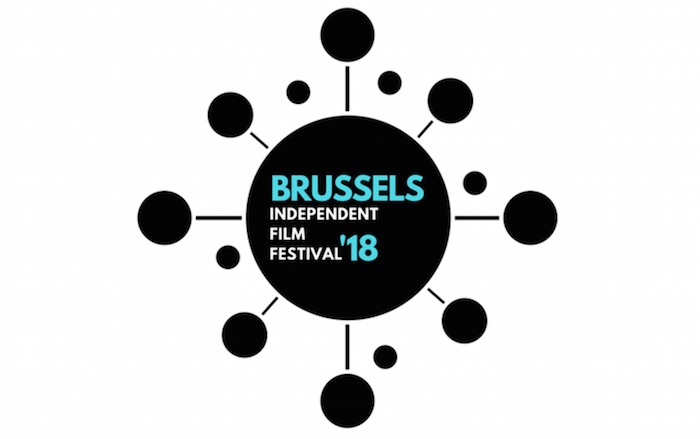HEALTHY PLANET DOCS TO SCREEN AMONGST SERENE OZ SCENERY
 Saturday, April 28, 2018 at 1:11PM
Saturday, April 28, 2018 at 1:11PM The advocacy documentary movement thrives through the passion and determination of people like Kevin and Lowanna Doye. The planet-conscious proprietors of a wholefoods superstore in the picturesque northern New South Wales township of Bellingen will launch the Kombu Food Film Festival on May 12, a single-day presentation of four environmentally-themed factual films that the parents-of-four hope will inspire their audience to build a healthier, happier future for all our children.

“Watching films, particularly informative documentary films, in a collective environment is really powerful,” says Brit expat Kevin, who established Kombu Wholefoods in 2004, having relocated with his Australian wife from the U.K. to Sydney in 2002 before heading to the Bellingen hinterland. “It can be a trigger for generating real change and feeling reassured that there’s a community of people who feel the same way on some of these issues.”
 Fighting the good fight on behalf of the planet is an ongoing commitment for the Doyes (pictured, right; at home, with their children). Their journey from Oxford to Sydney took the road less travelled, for example; over 18 months, Lowanna and Kevin peddled the Bike2Oz challenge, riding 12,000 kilometres across Europe and Asia to negate the carbon footprint that air travel would have rendered upon the Earth.
Fighting the good fight on behalf of the planet is an ongoing commitment for the Doyes (pictured, right; at home, with their children). Their journey from Oxford to Sydney took the road less travelled, for example; over 18 months, Lowanna and Kevin peddled the Bike2Oz challenge, riding 12,000 kilometres across Europe and Asia to negate the carbon footprint that air travel would have rendered upon the Earth.
The key objective of the Kombu Food Film Festival is to spotlight like-minded people from around the world who are committed to positive change in the generation and responsible harvesting of our food supply. “We’ve selected films that offer solutions,” says Kevin. “They reveal what some of the problems are, but they’re also highlighting discussion points from which we can move forwards.”
The 2018 line-up of films includes:
 Living The Change: Inspiring Stories for a Sustainable Future (Dirs: Antoinette Wilson and Jordan Osmond, pictured right; 85mins, Australia/New Zealand). The latest work from the film collective Happen Films, Living The Change explores solutions to contemporary global crises through the stories of people pioneering change towards a sustainable and regenerative way of life (official website).
Living The Change: Inspiring Stories for a Sustainable Future (Dirs: Antoinette Wilson and Jordan Osmond, pictured right; 85mins, Australia/New Zealand). The latest work from the film collective Happen Films, Living The Change explores solutions to contemporary global crises through the stories of people pioneering change towards a sustainable and regenerative way of life (official website).
Unbroken Ground (Dir: Chris Malloy; 26 mins, U.S.A.). Unbroken Ground examines how food can and should be a part of the solution to the environmental crisis – grown, harvested and produced in ways that restore our land, water and wildlife. Profiled are four groups pioneering such practices as regenerative agriculture and grazing, diversified crop development and restorative fishing (official website).
A Simpler Way: Crisis as Opportunity (Dir: Jordan Osmond; 78 mins, Australia). Follows an Australian community who responded to the global crises through the implementation of simple living practices. Throughout the year, the group build tiny houses, plant community gardens, employ ‘simple living’ techniques and define and overcome the challenges of communal living (official website).
Seed: The Untold Story (Dirs: Jon Betz and Taggart Siegel; 94 mins, U.S.A.). In the last century, 94% of seed varieties have disappeared. From the activist film group Collective Eye Films and featuring such high profile voices as Jane Goddall and Vandana Shiva, Seed reveals the challenging and heartening story of passionate seed keepers as they wage a David and Goliath battle against chemical seed companies, defending a 12,000 year food legacy. Executive produced by Oscar winner Marisa Tomei (official website).
The Kombu Food Film Festival screens May 12 at the Bellingen Memorial Hall from 1.00pm. Entry is free; a gold coin donation is appreciated. All proceeds will be donated to the Kombu Community Garden, Bellingen. Event information can be found at the official website.
 Australian,
Australian,  Documentary,
Documentary,  Environmental,
Environmental,  Film Festival
Film Festival 













